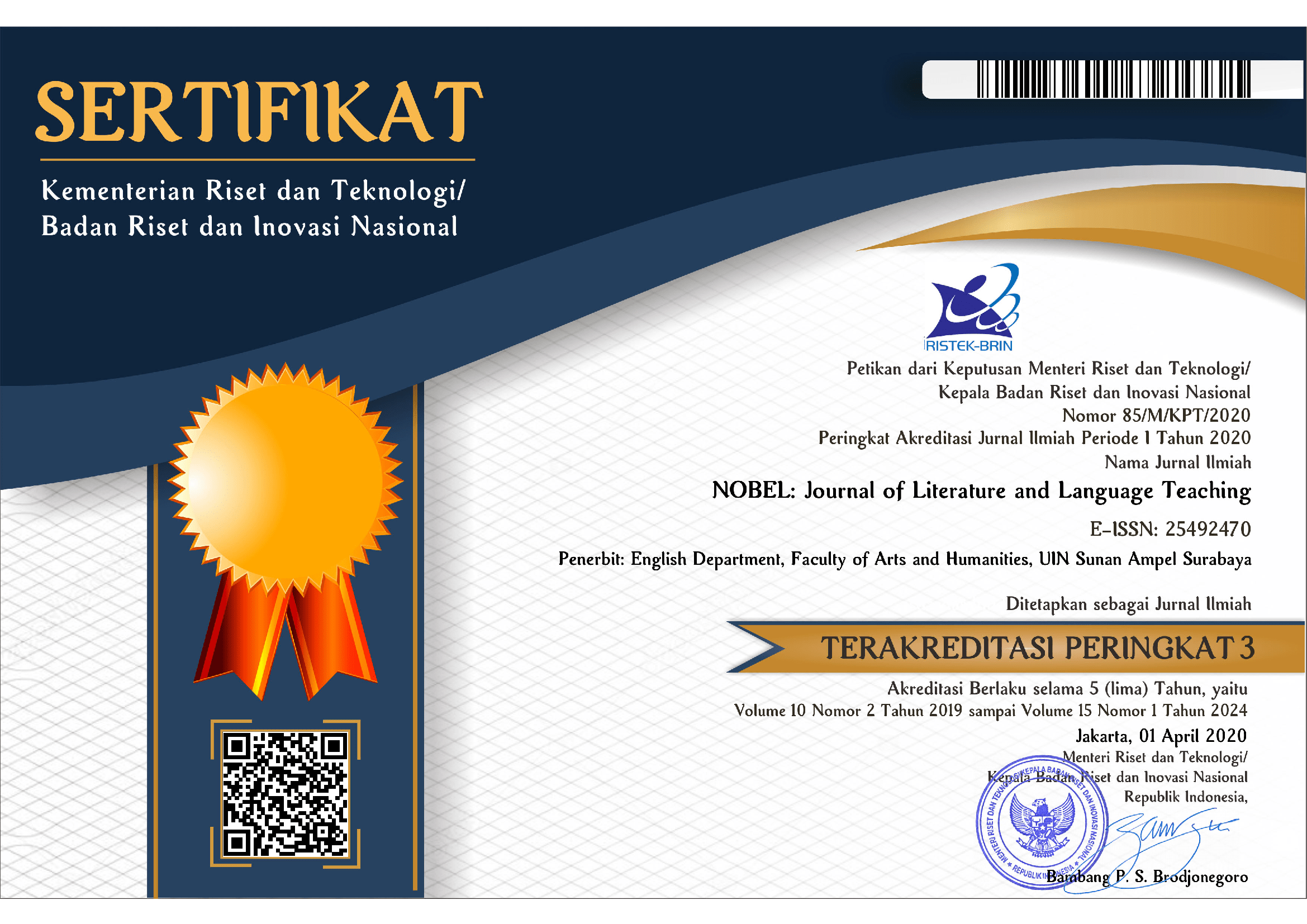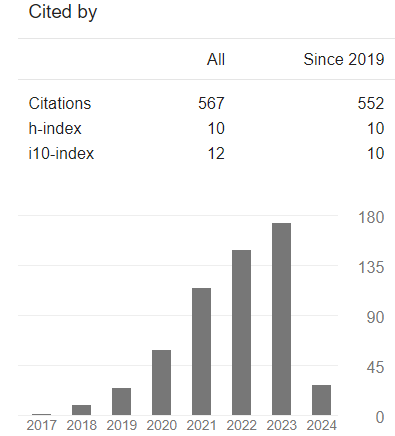Ethnocentrism and Its Effects as Depicted in The Kite Runner Novel
DOI:
https://doi.org/10.15642/NOBEL.2021.12.1.60-69Abstract
This study analyzed the portrayal of ethnocentrism and its negative effects in Khaled Hosseini’s The Kite Runner using Bizumic’s ethnocentrism theory. This study used descriptive qualitative methods; the data were collected from the novel in monologues, dialogues, and narratives. Based on the data, ethnocentrism depicted in the novel taking setting in Afghanistan was represented in terms of superiority and in-group preference. The novel depicted that one ethnic, the Pashtun, felt more superior to the Hazara. This superiority made the Pashtun always evaluate other groups based on their standard. They built the in-group preference in which they regard their standard as the best compared to the Hazara. In addition, the negative effects of ethnocentrism were manifested into three points: violence against other groups, ethnic wars, and desire to control the territory. In short, ethnocentrism causes differences in thoughts and opinions between one group and another and further affects their relationship negatively.
Downloads
References
Bizumic, B. (2012). Theories of Ethnocentrism and Their Implications for Peacebuilding. Australian National University.
Bizumic, B. (2014). Who coined the concept of ethnocentrism? Journal of Social and Political Psychology, Research School of Psychology, 2(1), 3-10. DOI: 10.5964/jspp.v2i1.264
Gudykunst, W. B., &Lee, C. (2003). Cross-Cultural and Intercultural Communication. CCC Theories. California: SAGE.
Hosseini, K. (2003). The Kite Runner. New York: Riverhead Books.
Kruger, J. (1999). Lake Wobegon be gone! The "below-average effect" and the egocentric nature of comparative ability judgments. Journal of Personality and Social Psychology, 77(2), 221–232. DOI: 10.1037/0022-3514.77.2.221
McGee, W. J. (1900). Primitive numbers. Annual report of the Bureau of American Ethnology (1897–1898), 19, 825–851. https://repository.si.edu/bitstream/handle/10088/91699/Primitive%20Numbers.pdf?sequence=1&isAllowed=y
Montague, A. (1942). Man’s Most Dangerous Myth: The Fallacy of Race. New York: Columbia University.
Nisa’, K. (2014). The ethnic conflicts inn Khaled Hosseini’s The Kite Runner. English Letters and Language Department. Maulana Malik Ibrahim of Malang. http://etheses.uin-malang.ac.id/8336/1/07320067.pdf
Njoroge, K. (2014). Ethnocentrism: Significance and Effects on Kenyan Society. Nairobi: Pan African University.
Pesic, V. (1993). The cruel face of nationalism. Journal of Democracy, 4(4), 100–103. DOI: https://doi.org/10.1353/jod.1993.0053
Sumner, W. G., & Keller, A.G. (1911). War and Other Essays. New Heaven: Yale University Press
Downloads
Published
How to Cite
Issue
Section
License
Copyright (c) 2021 NOBEL: Journal of Literature and Language Teaching

This work is licensed under a Creative Commons Attribution 4.0 International License.







